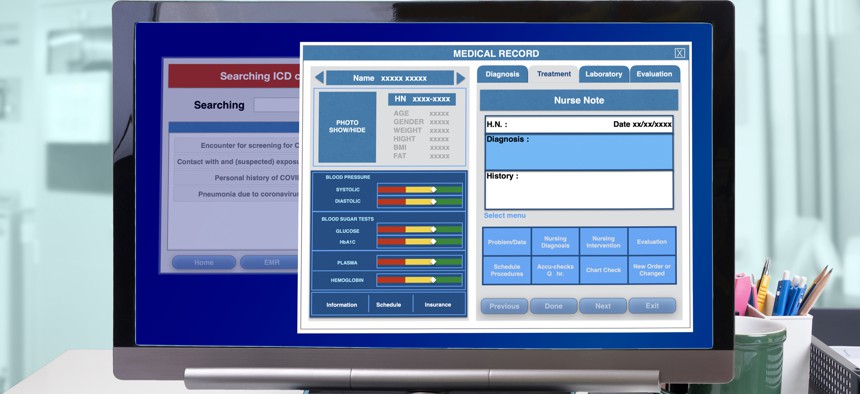FDA seeks more access to medical records

Gettyimages.com/ pandpstock001
To meet its mission of ensuring safety and effectiveness of medical products, the Food and Drug Administration wants to tap the rich vein of data inside electronic health records.
The Food and Drug Administration wants to dive deeper into the safety and effectiveness of medical products by aggregating individual medical records.
In a new sources sought notice, FDA describes the next steps for its Biologics Effectiveness and Safety initiative known as BEST.
The FDA has for many years collected data on what are called “adverse events,” when drugs and medical devices don’t preform as expected or have negative side effects. In 2007, the agency created Sentinel as a system to collect data from a wide range of medical data partners.
In 2017, the agency launched its BEST initiative as a pilot for using electronic health records and developing an improved automated adverse events data collection ability.
Then in 2018, the FDA award two contracts known as BEST 1 and BEST 2 to four companies: IBM, Dovel Technologies, IQVIA and Acumen. Dovel has since been acquired by Guidehouse.
BEST 1 was focused on the surveillance of biologics, which includes vaccines, blood and blood components, gene therapy and recombinant therapeutic proteins. BEST 2 is focused on developing new technologies and methods for automated reporting.
In the sources sought notice posted Tuesday, the FDA describes a new contract called BEST 3 as a recompete of a 2020 award. Lewin Group, IQVIA and CVS Health won seats on that contract.
For new version, the FDA said it wants to gain access to “large-scale administrative claims data sources covering health records of tens of millions of individuals.” The FDA would gain full access to medical records including structured and unstructured data.
All of the data would be “de-identified,” according to FDA.
The request for information describes how health records have changed over the last decade because of what the FDA says is a 10-fold increase in the use of electronic health records. The agency estimates that 85 percent of medical facilities use some form of EHR.
Electronic health records would offer the FDA a treasure trove of information including initial diagnosis, lab results and unstructured narrative text such as admission notes, discharge summaries, radiology reports and ancillary notes.
“EHR data offers richness of content and an embedded ability to validate mined data by further examination of the online record within the originating institution,” the FDA writes.
The draft statement of work lists four task areas:
- Data sources and analytic capabilities
- Operations and management
- Communications and outreach
- Transition services
Responses to the sources sought notice are due April 5.


